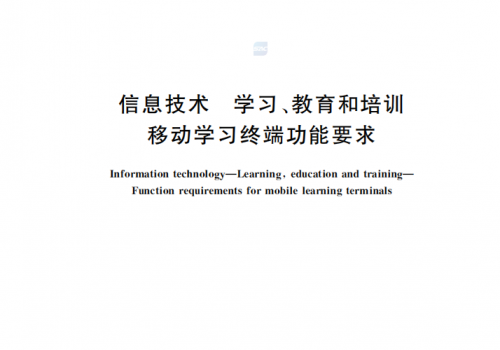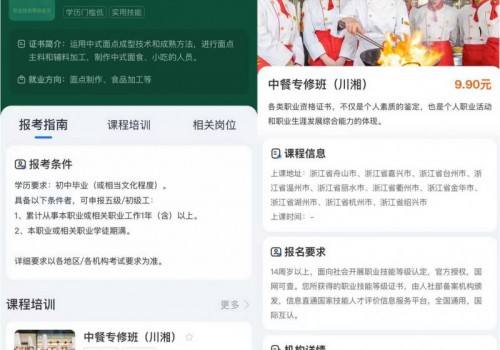Workers collect crude salt on the Manas Lake in northwest Chinas Xinjiang Uygur Autonomous Region on April 13.
Family Doctors
The Chinese Government will promote contracted family doctor services among priority groups this year including the elderly, pregnant women and children, according to the National Health Commission(NHC).
Among the targeted groups are patients with chronic diseases such as hypertension and diabetes, as well as those with severe mental disorders. The government will focus on promoting the services for people living in poverty, said an NHC offi cial in charge of the countrys community-level healthcare. Family doctors, including general practitioners registered with community-level health institutions, qualifi ed doctors at township clinics and village doctors, provide basic medical care and other health services.
They can provide customized services such as health consultations, evaluations, interventions and medication instructions as well as help to transfer patients to major hospitals.
The government will improve supportive policies and allocate public funds to subsidize some of the service fees to make the services more available to the public, offi cials said.
Water Diversion Project
The middle route of Chinas southto-north water diversion project is expected to deliver an additional 507 million cubic meters of water to the countrys northern provinces over the next three months.
The additional water will be delivered from April to June as water levels at the Danjiangkou Reservoir and Hanjiang River are expected to be higher during that time according to the Yangtze Water Resources Commission of the Ministry of Water Resources.
In the coming months rainfall upstream from the reservoir is predicted to be more than in previous years, it said.
The water will be channeled to Tianjin Municipality, Hebei and Henan provinces.
The middle route begins at Danjiangkou Reservoir in central Chinas Hubei Province and runs across Henan and Hebei provinces before reaching Beijing and Tianjin.
By the end of 2017, the middle route, which began supplying water on December 12, 2014, had transferred more than 10.8 billion cubic meters of water to Chinas northern provinces.
The south-to-north water diversion scheme, the worlds largest, takes water from the Yangtze to feed dry areas in the north through eastern, middle, and western routes.
Illegal Online Activities
Chinas Ministry of Culture and Tourism has tightened its crackdown on illegal online games, livestreaming apps and websites hosting illegal performances, it announced on April 17.
The ministry has ordered app stores to check the qualifi cations of live-streaming apps. Nearly 5,000 live-streaming apps have been investigated with 370 closed.
A total of 14 companies were blacklisted by the ministry after being found to have put live-streaming apps into app stores using fake business licenses. App stores were asked to close 57 apps made by these companies.
Thirty performance websites were investigated for illegal performances involving pornography, violence and gambling, including websites that did not require performers to register with their real names or their identity.
The ministry also investigated 50 online games for illegal content or content that instigates crime or compromises social values.
Some games did not adopt suffi cient measures to prevent minors from addiction, and some did not require real-name registration or protect users information, the ministry said.
Heritage Site Security
On April 16, an offi cial with the State Administration of Cultural Heritage(SACH) warned against security loopholes at many heritage sites and vowed to enhance law enforcement.
“There are still many problems concerning the security of cultural heritage sites,” said Chen Peijun, a senior SACH offi cial, while briefi ng on the result of cultural heritage security inspections from last year.
“Awareness of cultural heritage protection needs to be raised among local offi cials and the public, and law enforcement in this area should be expanded,” Chen said.
Last year, cultural heritage administrations across the country recorded around 60,000 security problems while inspecting 437,333 cultural heritage sites, and approximately 3,600 problems in heritage sites under national protection.
The SACH opened investigations into 90 cases involving heritage sites under national protection in 2017. Six of these cases involved criminal offenses and were handed over to the police.
Copyright Infringement
China dealt with more than 460 cases of copyright infringement in the fi rst three months of the year, the National Offi ce for the Fight Against Pornography and Illegal Publications said on April 12.
More than 1.5 million illegal publications including online literature, music, videos and games, were confi scated, the offi ce said.
In one case a suspect surnamed Chen conspired with six people to play a movie for the staff of more than 200 work units in Luzhou, southwest Chinas Sichuan Province, without the authorization of the copyright owner from November 2016 to April 2017. The suspect allegedly illicitly earned over 1 million yuan ($159,000). All seven offenders were arraigned and an investigation is now underway.
In another case three suspects sold USB fl ash drives containing multiple items of computer software without authorization at online stores from 2015. The crime took place in Suqian in east Chinas Jiangsu Province and involved more than 10 million yuan ($1.59 million). The three were detained by the police but were later released on parole pending further investigation.
Joyous Celebrations
Performers celebrate folk festival Sanyuesan, which refers to the third day of the third lunar month in Chinese, in Liuzhou City, Guangxi Zhuang Autonomous Region, on April 18.
The festival, a public holiday in Guangxi, is observed by a number of Chinas ethnic groups, including the Zhuang, Han and Miao.
UNESCO ASPnet
An international center for the UNESCO Associated Schools Network (ASPnet) will be established in Sanya, south Chinas Hainan Province, local authorities announced on April 16.
The Education Department of Hainan said on April 16 that the construction of the center in Sanya had been approved by UNESCO.
“Building the center is an important measure to further open the countrys educational fi eld, as well as to improve the internation- alization of education in Hainan,”said Li Yuenan, Deputy Director of the provincial educational department.
“The province will introduce international or regional organizations to strengthen cooperation between Chinese and foreign institutions, and promote the development of education in the province,” Li said.
The UNESCO ASPnet, linking ed- ucational institutions across the world, has been recognized as an effective tool for reaching the target for global citizenship education and education for sustainable development.
There are more than 11,500 ASPnet member schools in over 180 countries. A total of 10 Chinese high schools, scattered across Beijing, Nanjing, Shanghai and Hainan, have already joined the network.
Robot Master
Competitors take part in the 18th China Adolescent Robotics Competition in Yongjing County, northwest Chinas Gansu Province, on April 13.
More Liquidity
Chinas central bank announced on April 17 that it will cut the reserve requirement ratio (RRR) for most commercial and foreign banks.
The Peoples Bank of China(PBC) cut the RRR for most banks by 1 percentage point on April 25 to help small businesses and to improve overall stability and liquidity of the economy.
The move did not include policy lenders such as the China Development Bank.
Funds released will be used to pay back medium-term lending facilities, according to the PBC website.
“The move aims to create a sound environment for high-quality growth and supply-side structural reform,” it said.
The central bank said it will keep the monetary policy prudent and neutral, maintain a stable, reason- able level of liquidity, and oversee moderate growth of fi nancial credit and social fi nancing.
A targeted RRR cut earlier this year encouraged inclusive fi nancing by commercial banks, such as credit support for small and micro enterprises, startups and agricultural production.
The PBC has recently managed market liquidity through targeted moves rather than across-the-board adjustments of interest rates or RRRs.
The last cut to the benchmark RRR was in March 2016, when the rate was lowered by 0.5 percentage points.
Improved Corporate Performance
Listed companies in China reported rapid profi t growth in 2017 as the countrys supply-side structural reform helped improve their com- petitiveness.
Currently, about half of listed companies on the countrys two major exchanges have reported their 2017 performance, with some 72 percent of them seeing year-onyear net profi t gains, according to the Economic Information Daily.
Only 58 of the 1,700 listed fi rms which have disclosed their fi nancial performance reported losses.
Most companies in traditional sectors, such as coal and steel, posted strong growth due to the countrys economic restructuring and improved business environment.
The revenue of 20 listed steel companies grew 32 percent year on year in 2017, with none suffering losses, as the country continued to slash excess steel capacity, prompting price increases.
Listed fi rms in the coal and non-ferrous metal sectors reported higher earnings as well.
Gui Haoming, a senior researcher with Shenwan Hongyuan Securities, said he expects nonfi nancial listed fi rms to continue to see increased earnings despite a possible slower pace.
Meanwhile, listed fi rms in emerging sectors, like new energy vehicles and integrated circuits, posted strong fi nancial performance.
In the Report on the Work of the Government 2018, China highlighted the development of emerging sectors as a way to promote the countrys rise as a manufacturing powerhouse.
Intelligent Farming
Farmers plant vegetables with the BeiDou Navigation Satellite System in Tawan Village, Wuzhong in Ningxia Hui Autonomous Region, on April 18.
The application of the system to agricultural production not only enhances effi ciency and quality, but also lowers overall costs.
ODIs Continued Growth
Chinas non-fi nancial outbound direct investment (ODI) continued to see double-digit growth in the fi rst quarter of this year, offi cial data showed on April 16.
Domestic investors made $25.5 billion of non-fi nancial ODI in 2,023 overseas enterprises in 140 countries and regions from January to March, the Ministry of Commerce(MOFCOM) said.
The fi gure was up 24.1 percent from the same period last year, according to the MOFCOM.
ODI in countries along the Belt and Road maintained strong expansion, rising 22.4 percent from 2017, to $3.61 billion in the fi rst three months.
The structure of outbound investment has been optimized, with the majority of investment going to sectors such as leasing, mining, manufacturing and IT services, the ministry said on its website.
Noting an “irrational tendency”in outbound investment, however, authorities have set stricter rules and advised companies to make investment decisions more carefully.
In a document released in August 2017, the State Council said overseas investment in areas such as real estate, hotels, cinemas and entertainment would be limited, while investment in sectors such as gambling would be banned.
In the fi rst quarter, no new ODI projects were reported in the real estate, sports or entertainment sectors, the MOFCOM said.
Surging M&As;
Chinese mergers and acquisitions(M&As;) in ASEAN countries soared in 2017 mainly due to the Belt and Road Initiative despite a slump in overall outbound investment, according to a report.
In 2017, the deal value of Chinese M&As; in these countries surged to $34.1 billion, rising by 268 percent and representing a quarter of the total value of disclosed Chinese M&As;, accounting fi rm Ernst & Young (EY) said in a report.
“Taking advantage of its geographic location as a trade hub under the Belt and Road Initiative, ASEAN has achieved steady growth in recent years,” said Andrew Choy, EYs Greater China International Tax Services Leader.
Looking ahead, China and ASEAN countries are expected to further improve their relationship and expand broader cooperation under the Belt and Road Initiative, Choy said.
Proposed by China in 2013, the initiative aims to build trade and infrastructure networks connecting Asia with Europe and Africa along ancient Silk Road trade routes.
Increasing Rural Income
A worker in a feedlot in Guantao County, Handan in Hebei Province, on April 17.
In recent years, Guantao County has been exploring new ways to reduce poverty. The feedlots are purchased by the poverty alleviation funds allocated to the 403 poor families in the area, who can then get dividends in return.
JDs Insurance Investment
China e-commerce giant JD has invested 537 million yuan ($85.5 million) in Allianz China General Insurance Co. Ltd., amounting to a 33.33-percent stake in the company. It will become the second largest shareholder after the transaction is completed.
Allianz China General Insurance said in a statement its registered capital has increased from 805 million yuan ($128 million) to 1.61 billion yuan ($257 million).
China Sinda, a law fi rm specializing in the practice of intellectual property laws in China, invested 200 million yuan ($32 million) and will hold a 12.4-percent stake after the transaction.
The two companies reached a long-term cooperation deal and will establish a joint digital insurance company, according to a report from the China Securities Network.
The media reported in 2017 that JD was looking to launch an Internet insurance service and move into the online brokerage and Internet banking businesses as part of its expansion plan to surpass Alibaba Group Holding Ltd., as Chinas largest business-to-customer company by 2021.
Customized Tourism
Chinas customized travel market grew rapidly in 2017, an industry report said on April 16.
About 40 percent of Chinese tourists customized travel was for outbound travel, with Europe accounting for 9.3 percent of the total. The report was jointly released by online tour operator Ctrip.com and China Outbound Tourism Research Institute (COTRI).
“Chinas travel market is booming, offering a new business model and opportunities for products and services,” Kane Xu, Ctrip Customized Travel CEO, said.
With a year-on-year growth of 130 percent, Europe has seen an increase in Chinese travelers opting for more unique, personalized travel experiences, in addition to in-depth, slow-paced, private, niche and leisure-focused trips.
In 2017, more than 6 million Chinese people made their fi rst trip to Europe, making it the second most popular continent for Chinese travelers. Women traveled more than men, while 23 percent of total outbound tourists to Europe were aged 50 and over.
The top fi ve European destinations were the United Kingdom, Italy, France, Russia and Greece. On average, customized trips to Europe lasted about 12 days with tours not exceeding two countries.
Count Down for Volume Manufacturing
The seventh-generation trucks produced by Chinas auto giant FAW Group Corp., known as the Jiefang J7, roll off the production line in Changchun, Jilin Province, on April 18.
此文由 中国教育导报-初中编辑,未经允许不得转载!: 中国教育导报 > 初中 » Salt Harvest








